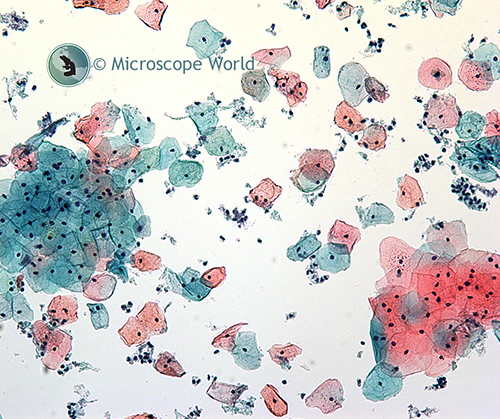Pap Smear under the Microscope
Nov 8th 2017
The Pap smear is a screening procedure that tests for cervical cancer. This test checks for the presence of precancerous or cancer cells on the cervix, the opening of the uterus. Women typically are advised to start getting Pap tests around age 21. During a Pap smear cells from the cervix are examined for abnormal growth.
There are a couple different methods for Pap smear testing.
In a traditional Pap test, cell samples are obtained from the vagina, cervix, and cervical canal and spread on a glass microscope slide. The microscope slide is then sent to a lab for examination under the lab microscope.
The ThinPrep Pap test was designed to reduce some of the technical problems inherent in the tradition Pap smear method. In the ThinPrep Pap test, cell samples are collected using a special brush that is immediately washed in a special fluid. The ThinPrep machine then filters out the cells from the solution and deposits them in a thin uniform single layer of cells on a glass slide for microscope examination. The ThinPrep Pap test is used to screen for cervical disease, HPV and some common sexually transmitted infections.

This is an image of a ThinPrep Pap smear captured under a lab microscope at 100x magnification.
A few advantages to the ThinPrep Pap method include removing contaminants such as blood and mucus which can obscure cells in the traditional Pap smear. The single layer of cells is easier to examine under the microscope. This results in an increased rate of detection of abnormal cells. The disadvantage of the ThinPrep Pap smear method is that there is an increased cost incurred by the collection fluid and cost of continued operation of the ThinPrep machine.

This is an image of a ThinPrep Pap smear captured under the lab microscope at 400x.
To learn more about what you can expect during a Pap smear visit Mayo Clinic's website. If you have questions regarding lab microscopes or digital microscopy contact Microscope World.





